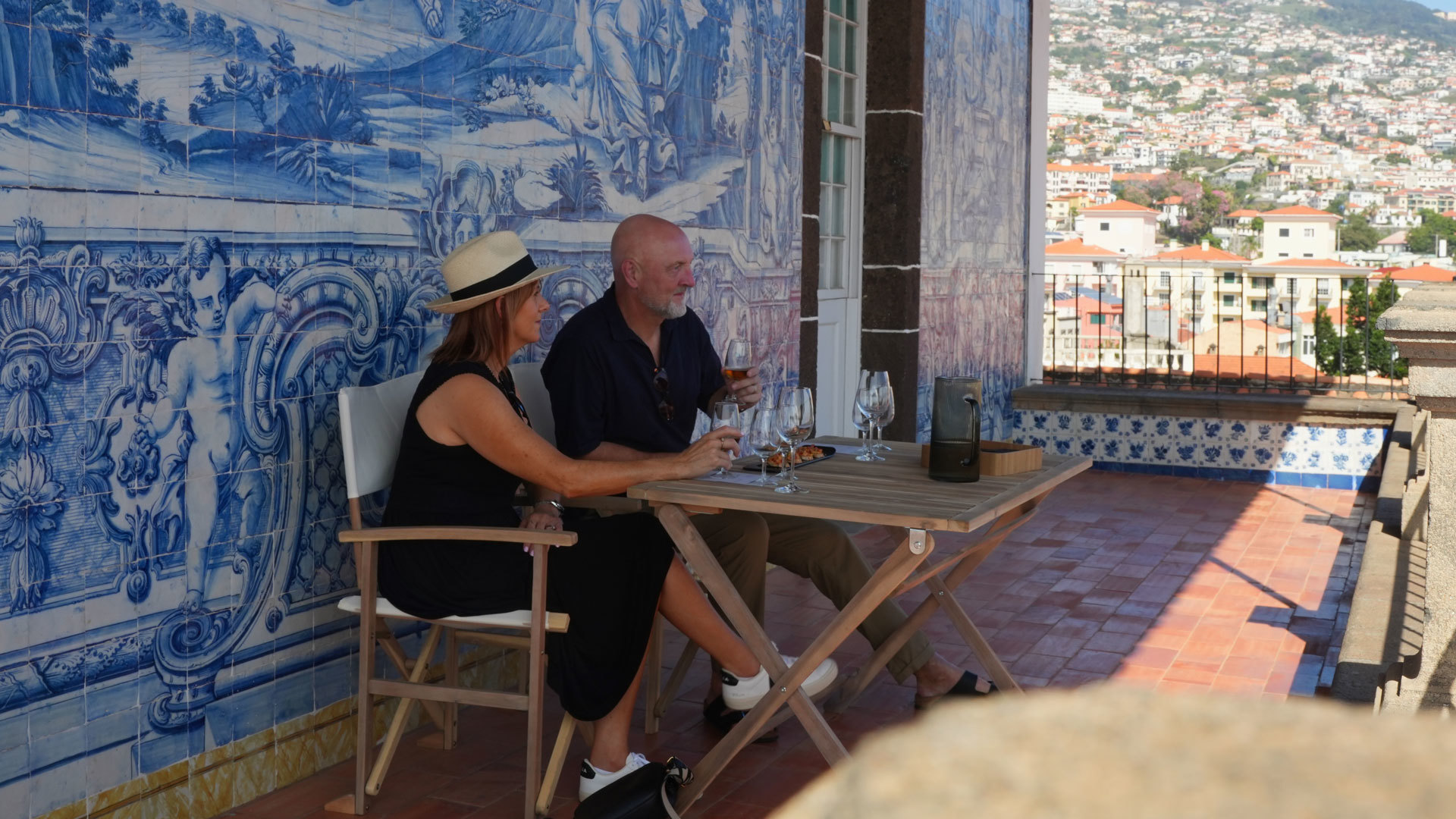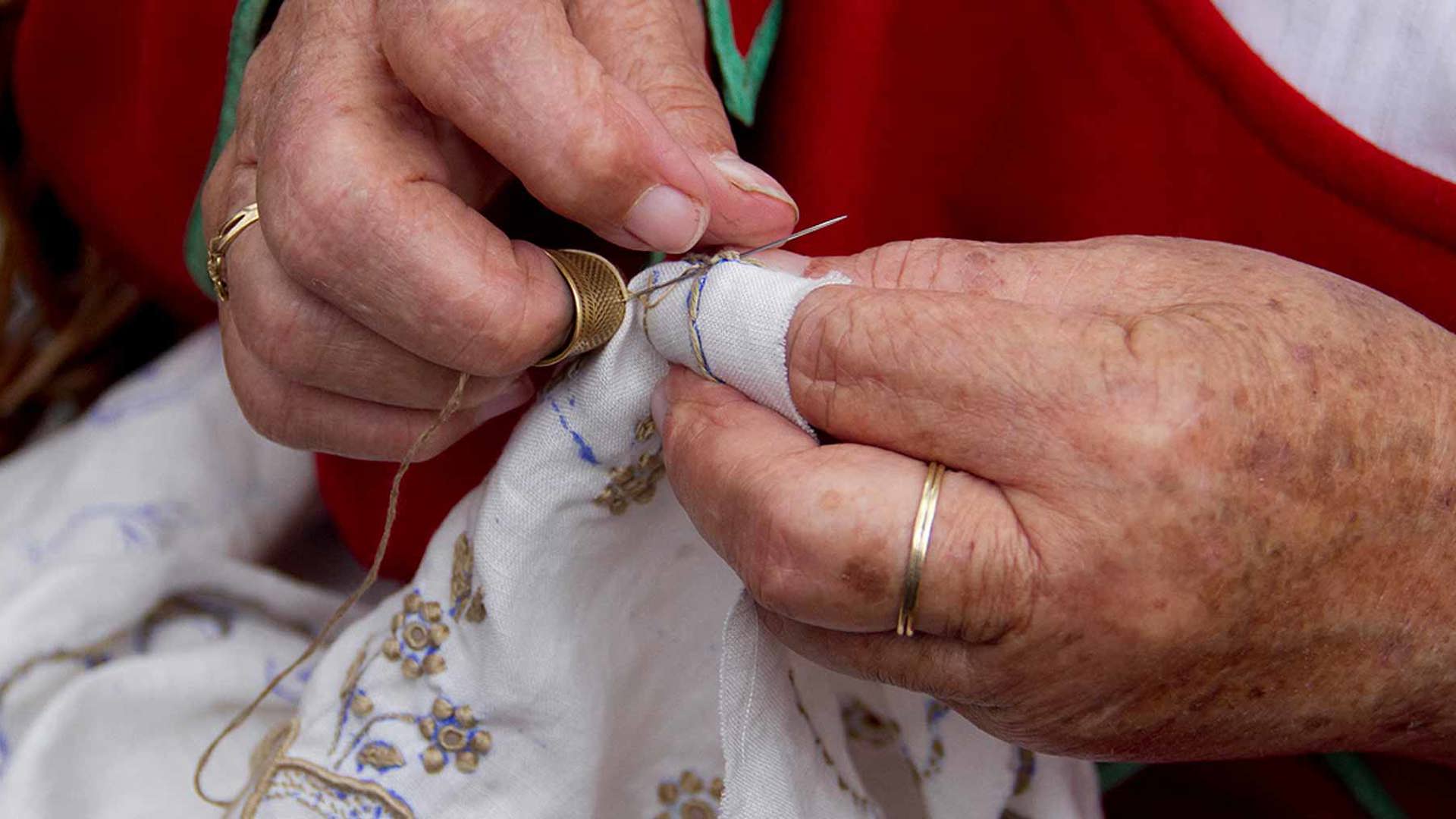Madeira Embroidery is a true representation of excellence, tradition, and art. It has a rich history dating back to the 15th century when Madeira was first colonized. Over the centuries, it has become one of the most recognizable brand images of Madeira, known for its intricate details and unique identity.
Embroidery is a part of the culture and history of the Madeiran people. While the original craft was only for personal consumption, the extremely detailed, hand-crafted art form can now be found across the world in many different forms, from bed linen to fashion houses. The embroidery would become a source of income for women who would work at home in addition to their daily chores on the authentic works of art. The process has changed very little across the decades, and a visit to the Bordal provides an insight into the traditions and skills that continue to produce needlework of the highest quality.
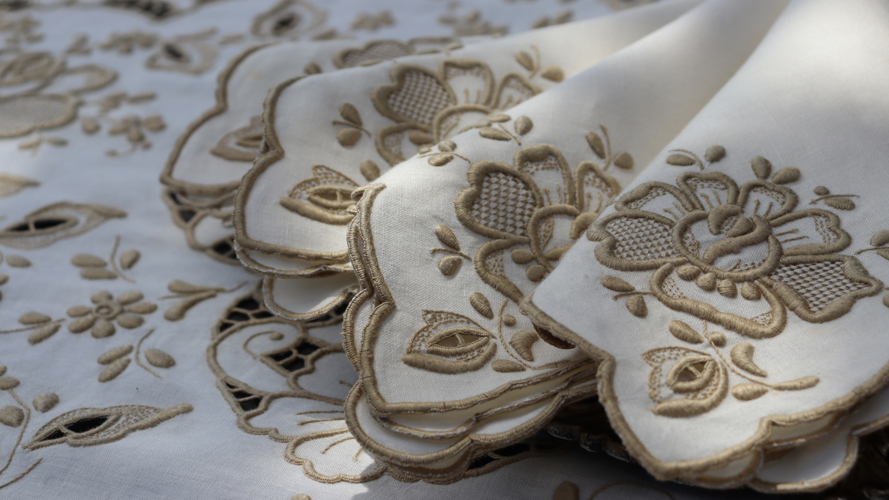
My husband and I arranged a guided tour to visit the Bordal factory in the centre of Funchal. As someone with a passion for fashion and fabrics, I was very interested to learn about this process and get a close-up look at the finished products. I was also aware that Bordal had been commissioned to create lace collars for a collection by Chanel, which clearly demonstrates the high regard for Bordal’s workmanship. My husband took a little more persuasion, I have to say, but soon became enthralled by the passion demonstrated by the workforce at Bordal.
Once you arrive at Bordal’s historical building located in Rua Fernão Ornelas - one of the main predominantly pedestrian streets dedicated to commerce in Funchal - you will be met at the doors by a lady carrying out needlework dressed in traditional Madeiran folklore costume. Climbing the first stairwell, you immediately feel like you are taking a step back in time and of course, the large windows are adorned with beautiful flowing lace curtains. We were taken to the second floor to wait for our tour to begin. The shop displayed a wide range of embroidery items, from tablecloths, and bed linen to clothing, and even at some distance, the intricate detail of the embroidery was most noticeable.
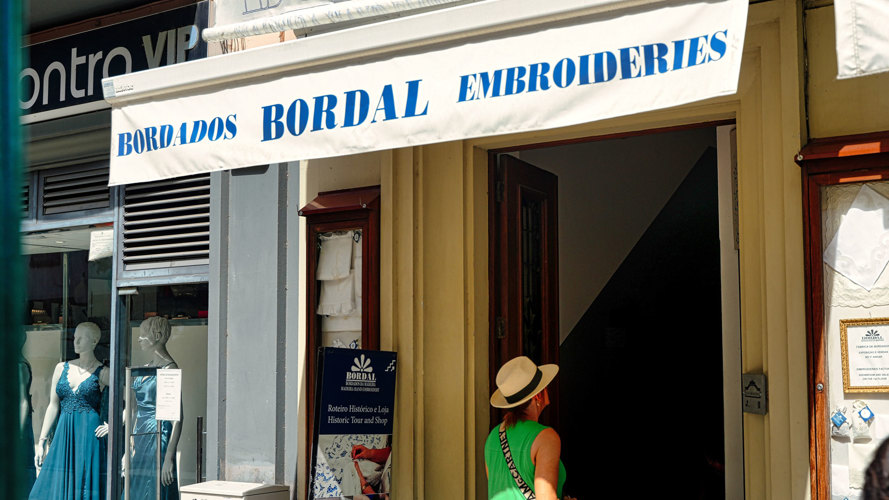
Our guide was a lovely lady who spoke excellent English and was most welcoming. We first learnt of the long history of embroidery on Madeira, how it became an important source of income to these families and how the women in the villages would, and still do create crafted embroidery in their homes once they had received instructions and patterns.
Understanding how something is made gives you a far greater appreciation of an art form. The time, effort and skills required in each piece are incredible and truly inspiring. My husband was now fully immersed in the tour and would soon try, as would I, hands at some needlework and doing so we soon realised just how difficult it is and I think if left alone for too long with a fine needle we would have caused industrial injury!
We expected to learn how the manufacturing of embroidered garments may have developed over time, but it was so nice to see that this skill was so reliant on the women’s ability to create these masterpieces using age-old skills that had been passed down through family generations. Very little machinery is used and the only visible ‘modern’ machinery was washing machines and irons! It was so nice to see an industry untouched by automation.
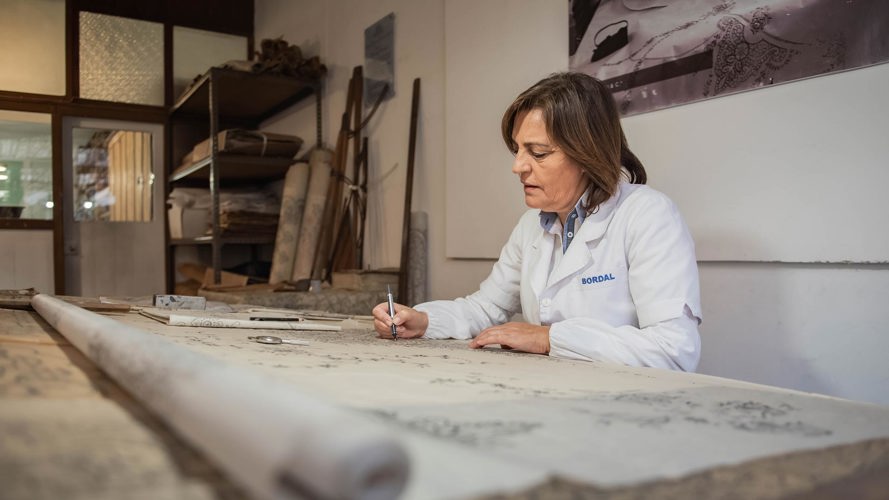

In addition to the fine needlework, the third floor in Bordal was home to some of the manual labour that included washing and ironing each individual piece before it could be considered finished. The team of ladies seemed to be happy at work, and it was clear this was a team environment at its best, all working together.
Whilst the production from start to finish is impressive, the beginning of the process is what we found more fascinating. Once the artwork is created, the price for the work is calculated using a watch-like device known as the curvimeter which calculates the number of stitches required by rolling across the pattern sheet and a price is derived based on this count.
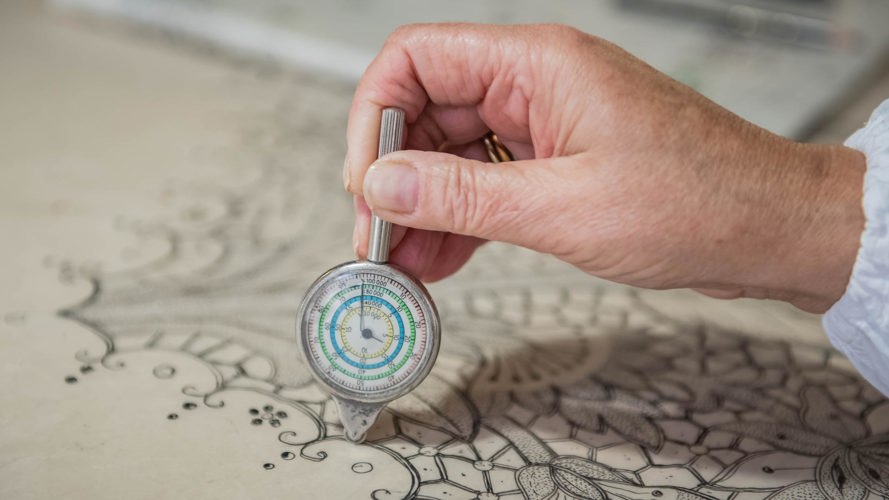
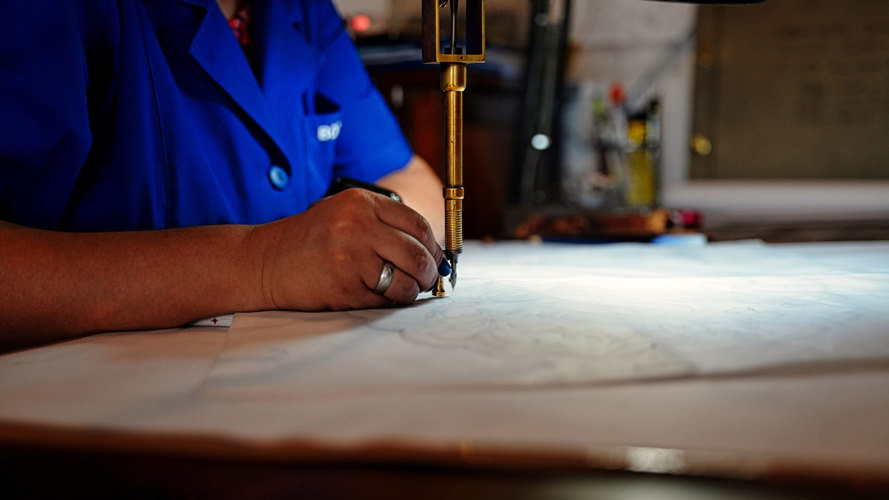

Then, the perforation machine which has similarities to a fountain pen is moved over the pattern sheet (like baking paper) creating perforations which are then stamped onto the fabrics and ready for the embroiderer to follow. The perforation process is such a delicate element that it requires years of practice. As part of the tour, you will get up close to all I have described, and I am sure you will be as impressed as we were.

My husband and I talked about our visit to Bordal long after leaving the tour, and it seems we were both emotionally engaged with the dedication and passion of the people at the factory.
One worrying fact we learned was that in 1940 there were 50,000 embroiderers and these days the number is under 1000. Even though is sad to conclude that there was a massive decline in the labour force, it’s very heartwarming to testify that the business still thrives in the heart of Funchal at Bordal. I really do hope this tradition is maintained.
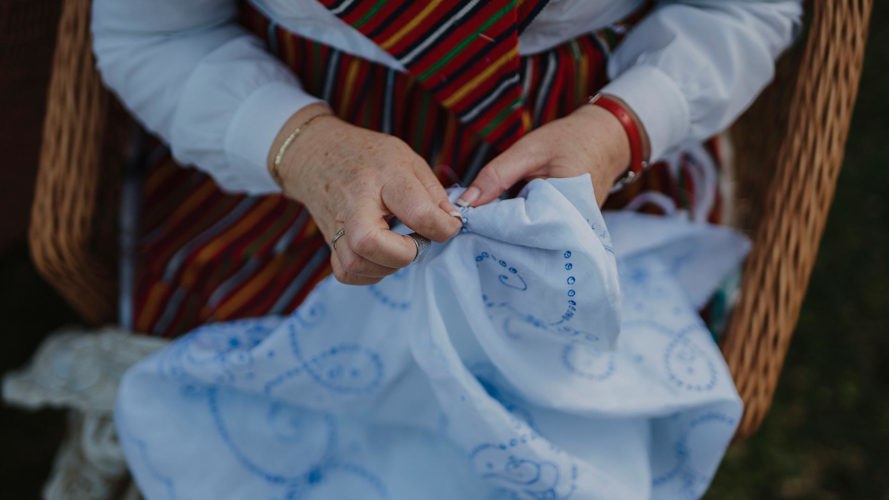

Visiting the Bordal workshop supports the Island's traditions and ensures the continuation of this valuable skill. You cannot leave the Bordal factory without a return visit to the shop to make a little purchase. This was the moment my husband became less interested and left me alone to deliberate. Although fortunately for him I could not find the Chanel blouse!
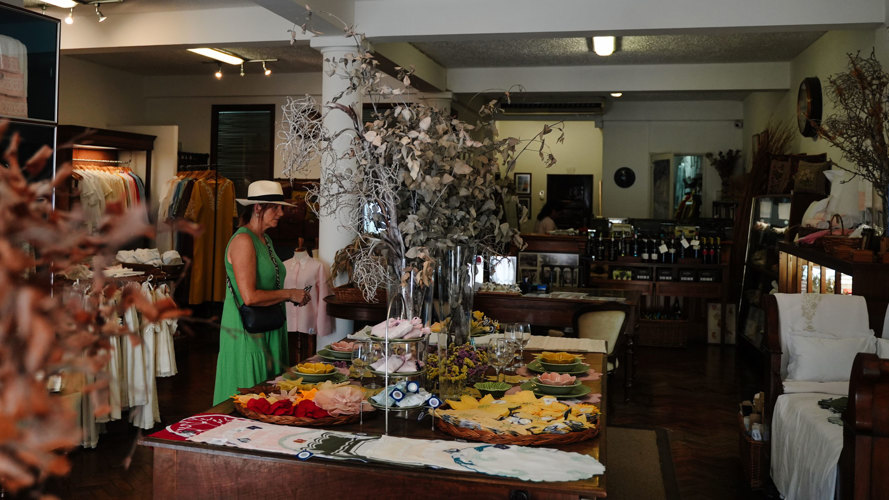

My husband and I noticed a visible passion for the production of Madeira Embroidery in its workforce. It is the passion of Madeiran families in rural villages that will continue to maintain these longstanding traditions and produce products made with love. We applaud all the workers at Bordal, not only for the incredible skills on display but for the warmth they showed while presenting us with a big part of Madeira’s History.
Tracy Sullivan
